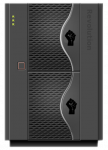Sometime on November 30, Google broke public calendar sharing for apps users. This means that any calendars previously shared with the world (like, for example, my IT events calendar) are no longer visible. As is typical for Google, the change was made quietly and it was not immediately obvious how to fix it. But here’s what you should do if your calendar is no longer public.
Google Reader’s Roach Motel “Un-Friends” the Internet
I’m not whining and crying because Google broke something I love. I’m upset because Google redirected a vibrant world of sharing into their own walled garden with no way to escape. This move effectively captures the fraternity of Reader sharers and firmly directs them to Google Plus for sharing and commenting. Sure, the new Reader is ugly and features are reduced generally. But the elimination of the sharing and reading feedback loop is a real loss to Internet users.
We Need a Storage Revolution
Storage protocols continue to mimic direct attached storage, with the concepts of block and file at its core. No amount of virtualization, and no new protocol, will fix this – we need a storage revolution.
Where Will Virtualization of Data Center Infrastructure Take Us?
Virtualization of IT systems decouples physical infrastructure from logical resources, hiding complexity and enabling new capabilities. However, not all potential benefits of virtualization have meaningful value outside IT circles: Too many of our discussions revolve around the very complexity that virtualization technology should be hiding! True business value is derived from transformed virtual resources in the next-generation data center, not the incremental capacity gains of virtual servers. But how will we get there, and what will this future look like?
Granularity: The Hidden Challenge of Storage Management
Many storage challenges focus on the conflict between data management, which demands an ever-smaller unit of management, and storage management, which benefits most from consolidation. Developing data management capability that is both granular enough for applications and scalable enough for storage is one key to the future of storage.



